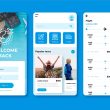Enhancing Communication in Chronic Care Management
Good communication in healthcare is very important for providing good care to patients. It helps patients trust their healthcare providers and follow their treatment plans. The COVID-19 pandemic has made communication more important as healthcare providers have had to use telehealth services to care for patients.
Telehealth allows patients to talk to their providers online from home. By using these tools, providers can make sure patients feel listened to and involved in their care. This can lead to better treatment results, happier patients, and a better healthcare system overall. Good communication will continue to be vital as we deal with the challenges of the pandemic.
Reducing the Cost of Chronic Disease Care
Chronic diseases such as heart disease, diabetes, and asthma pose a significant burden on the healthcare system, accounting for a substantial portion of healthcare expenditures. Research indicates that chronic diseases are responsible for as much as 75% of healthcare costs in the United States.
Managing chronic conditions often involves ongoing and coordinated care, which can be challenging for patients to navigate independently, resulting in frequent emergency department visits and hospitalizations. Indeed, over 60% of emergency department visits are made by individuals with chronic illnesses.
Care coordination services play a pivotal role in addressing these complexities. By facilitating streamlined office visits, ensuring timely and appropriate care delivery, and minimizing unnecessary emergency room visits, care coordination services can help reduce the financial burden associated with chronic diseases.
Additionally, remote patient monitoring devices have emerged as valuable tools in chronic disease management. These devices empower patients to monitor their vital signs and health metrics from the comfort of their homes, transmitting data securely to their healthcare teams.
Real-time data enables healthcare providers to make necessary treatment adjustments and identify potential issues early on, preventing them from escalating into more severe complications. By harnessing the power of care coordination services and remote patient monitoring devices, healthcare providers can enhance the quality of care for individuals with chronic diseases, while simultaneously lowering healthcare costs and alleviating strain on the healthcare system.

Streamlining Workflow in Chronic Disease Management
Primary care providers face the challenge of balancing administrative responsibilities with intricate patient care needs, particularly for those managing chronic diseases. The ongoing care and management required for these patients can be overwhelming and taxing for providers both emotionally and time-wise.
However, the utilization of Electronic Health Records (EHR) and practice management systems can greatly benefit providers in tracking and monitoring patient progress, ensuring they receive the necessary care and interventions. Patient engagement tools also play a vital role in enhancing efficiency and communication between patients and care teams.
Features such as secure messaging allow patients to easily connect with their providers for inquiries or concerns, reducing the necessity for unnecessary office visits or phone calls. This not only saves time for providers but also enhances patient satisfaction and adherence to treatment plans.
Ultimately, the implementation of EHR systems and patient engagement tools can markedly improve the efficiency and effectiveness of care for patients with chronic diseases. These technologies streamline administrative tasks, simplify documentation, and strengthen communication between patients and providers, allowing primary care providers to better manage their workload and deliver high-quality care to their patients.
Benefits
Telemedicine and Remote Monitoring
- Personalized Care: Patients can receive tailored treatment plans based on their specific needs.
- Real-time Adjustments: Doctors can quickly modify treatment strategies as needed.
- Early Detection: Issues can be identified early, leading to better outcomes.
- Improved Quality of Care: Overall patient care and results are enhanced.
Cost-Efficiency
- Increased Access: Patients in rural or underserved areas can access care more easily.
- Reduced Costs: Fewer hospital admissions and travel expenses can save money.
- Better Outcomes: Proactive care can lead to improved health and reduced costs.
EHR and Practice Management Systems
- Automation: Administrative tasks like scheduling, billing, and inventory are automated.
- Efficiency: Less manual work and fewer errors lead to faster and more accurate information.
- Improved Care: Doctors can focus more on patient care and less on paperwork.
- Cost Savings: Streamlining processes can save time and money.
As the COVID-19 pandemic continues to impact the healthcare industry, providers are finding themselves facing new challenges in delivering care to patients with chronic conditions. In response to this changing landscape, many healthcare organizations are turning to software solutions for chronic care management to help streamline their services and improve patient outcomes.
By incorporating chronic care management (CCM) into their practices, providers can better monitor and track the progress of patients with chronic conditions, ensuring they receive the necessary care and support to manage their health effectively. Additionally, combining CCM with remote patient monitoring (RPM) allows providers to remotely monitor patients’ vital signs and symptoms, enabling them to intervene quickly if any issues arise.
This integrated approach to care coordination not only improves the overall quality of care but also enhances the patient experience by allowing for more personalized and flexible care options. By leveraging software solutions for chronic care management, providers can optimize their care delivery processes, resulting in better outcomes for both patients and providers alike.










